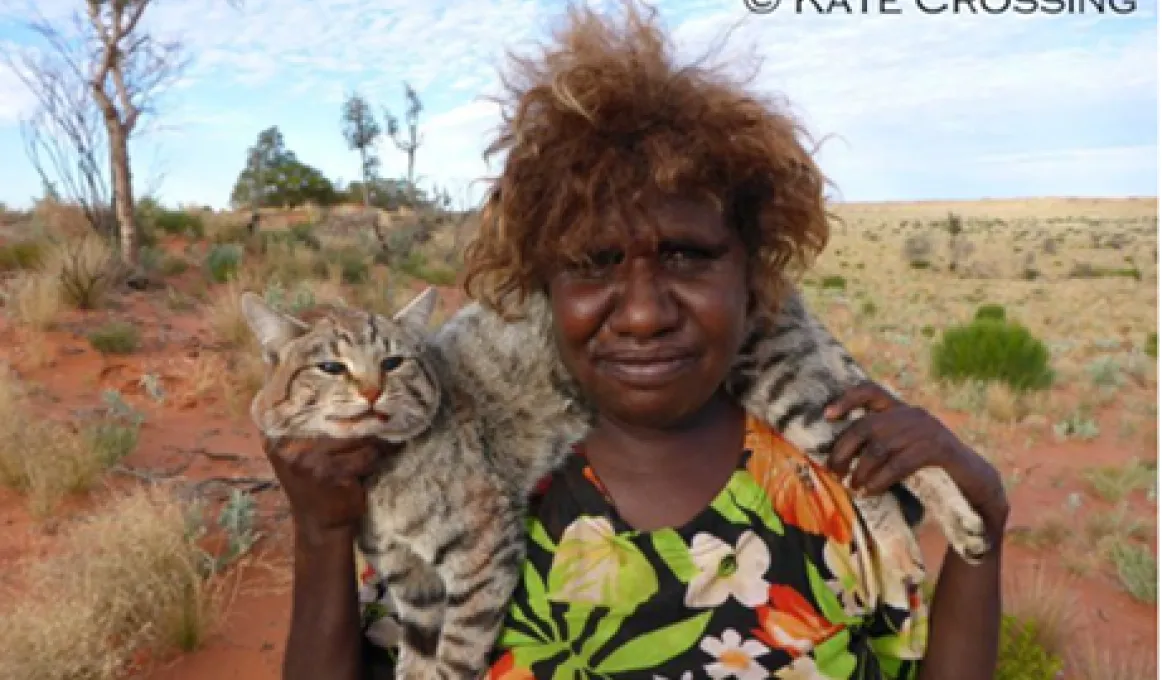Feral animal management in the Western Desert

Senior Western Desert traditional owner Nolia Napangarti-Ward is an expert in feral animal management and a source of advice for scientists and governments as she continues to care for her country around the remote community of Kiwirrkurra, Western Australia.
Nolia Napangarti-Ward is famous for being one of the ‘Pintubi Nine’ who walked out of the Gibson Desert in 1984 with her family and met modern Australia for the first time.
The senior Western Desert traditional owner from Australia’s remotest community of Kiwirrkurra is also well known for being featured in the award winning photo above.
Nolia is an expert in feral animal management, particularly cats, and has become a sought after source of expertise and advice for scientists and governments.
Nolia said that cat meat is very popular in her community.
“Everyone says ‘Nolia is coming with pussycat meat’ and they all get happy,” she said.
“And all the family sit down and have a good feed.”
A feral cat culling competition amongst the traditional owners on the Kiwirrkurra Indigenous Protected Area (IPA) has Nolia leading with 19 culls over the past two years, her nearest rival well back with 12. Community members are paid $100 for the tail and stomach of each cat delivered to Dr Rachel Paltridge, the ecological consultant for the IPA. This provides important scientific data on feral cats including the number of cats culled, their diet, colour and location.
The work of Nolia and her fellow community members has protected native animal populations around Kiwirrkurra. Populations of the native Bilby, the Great Desert Skink and other native animals in the wider region have been severely affected through cat and fox predation over the years.
Nolia brings an enormous amount of knowledge and personal commitment to her life’s work looking after the desert. She is also an expert in the art of managing country through fire.
The patchwork burning of the native grasses stimulates new growth and increases the level of food available to native animals while the old spinifex remains to provide cover from feral predators. The burning also prevents wildfire which destroys large tracts of land which in turn affects native animal populations.
Besides sharing her expertise with scientists from universities around the country, she hosts visitors from all walks of life on her country to allow them to experience the richness of the desert and her culture.
“I love my country,” Nolia says.
“And I know that I am looking after it.”
As a leader in her community, she passes on her knowledge to younger generations while modelling how to combine traditional and western science to better protect her beloved desert landscape.
This passing of knowledge across the generations is also personal for Nolia as her daughter and translator, Jodie Ward, is following in her footsteps. Not only has Jodie become a powerful advocate for threatened species preservation, she is also the youngest ever chairperson of the Kiwirrkurra Community.
Find out more
Nolia and Jodie are supported in their work through Australian Government Indigenous Protected Areas funding.
Further information is available at Indigenous Protected Areas.